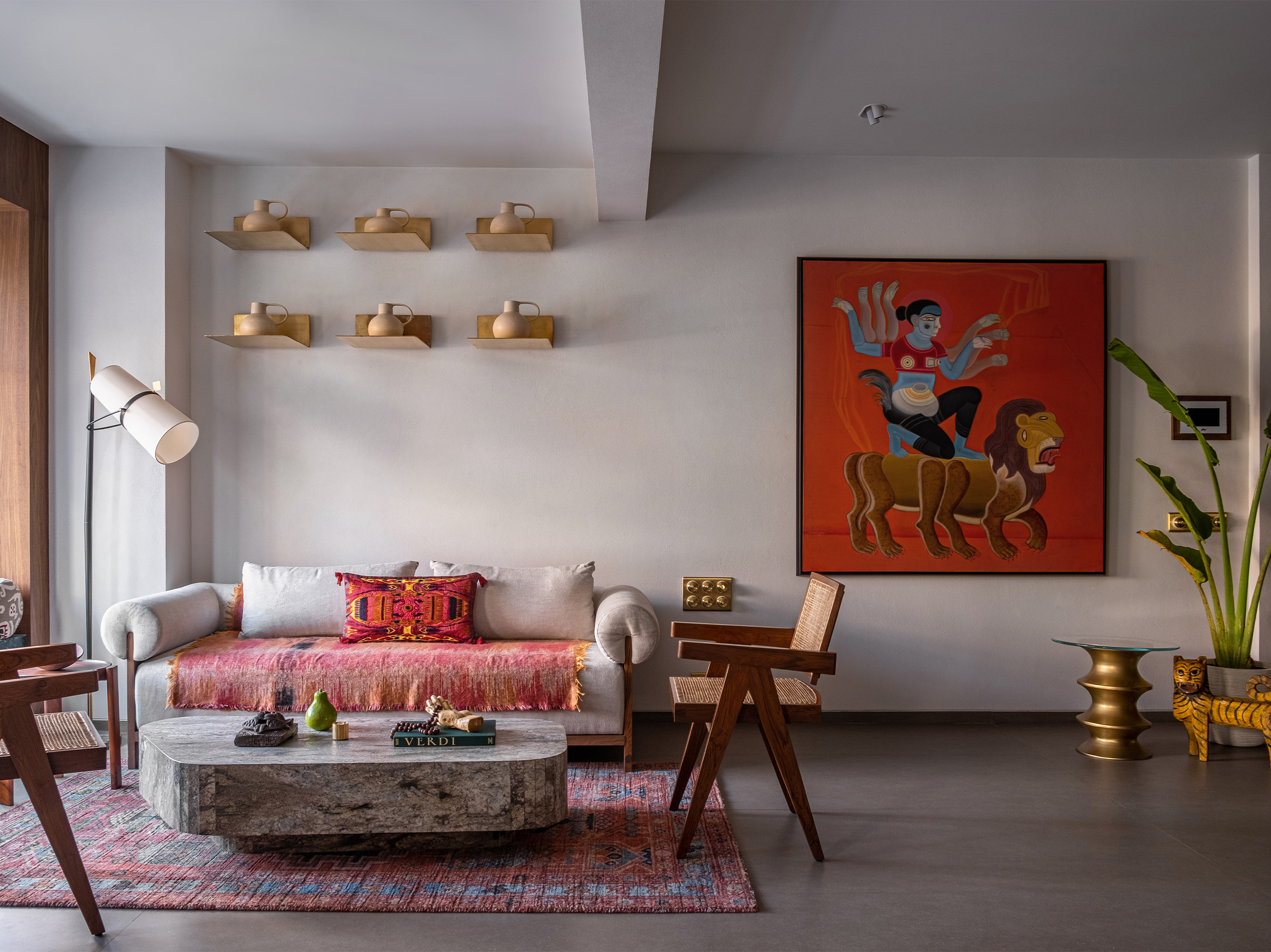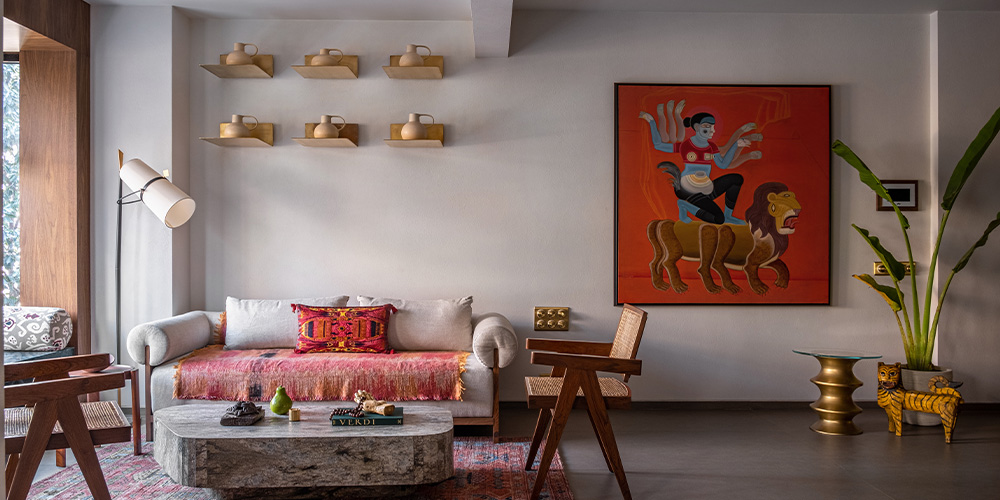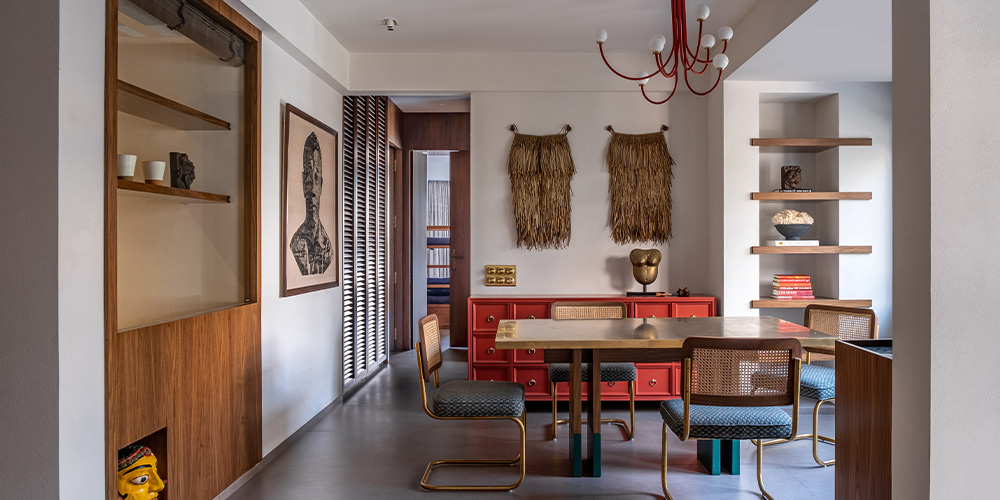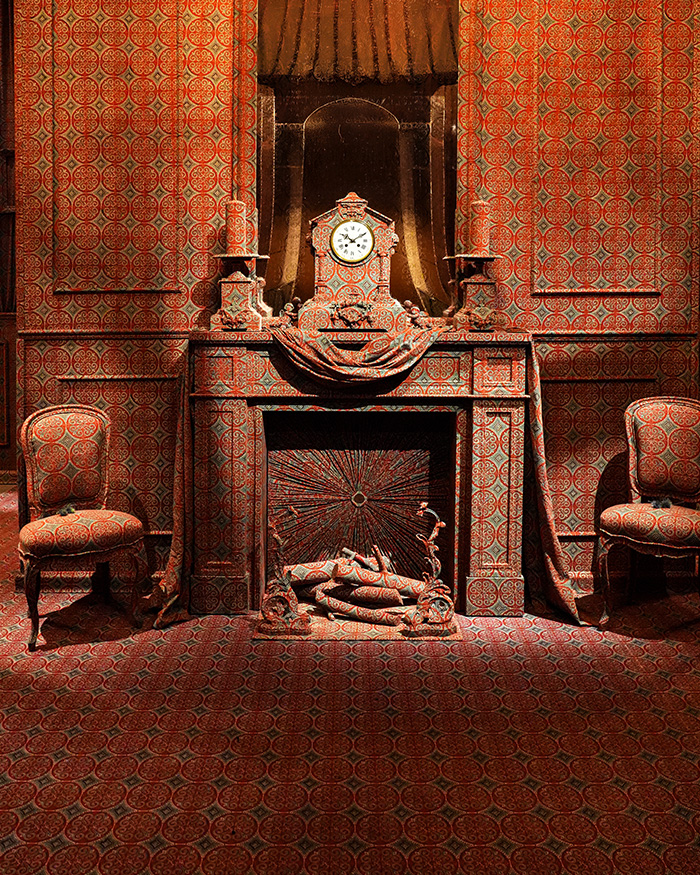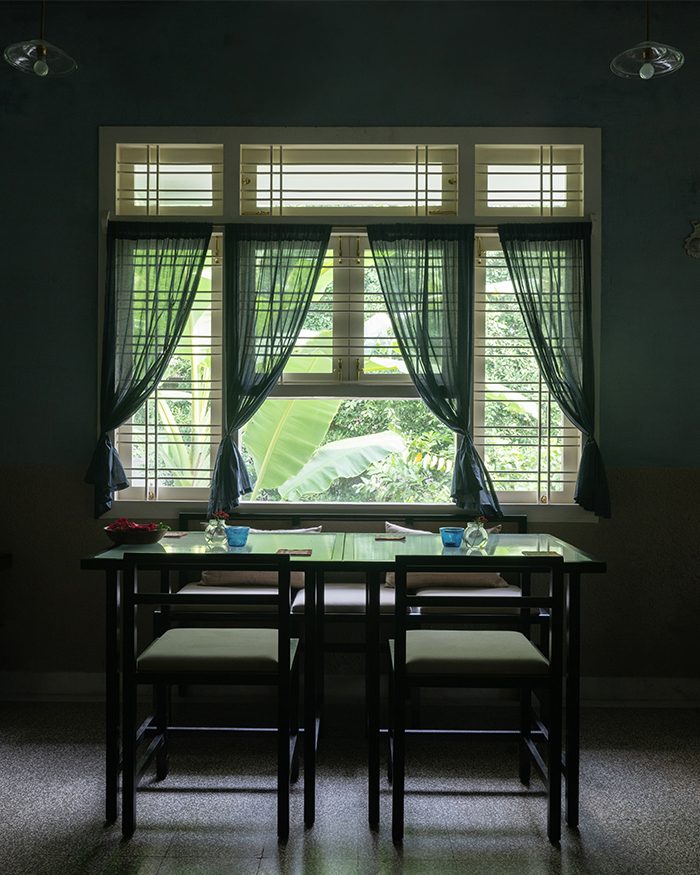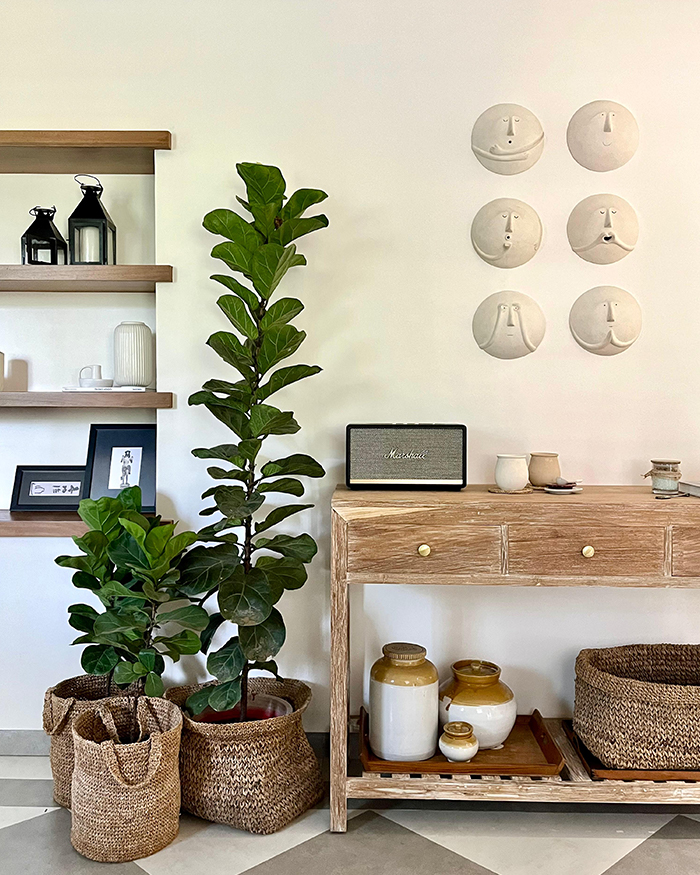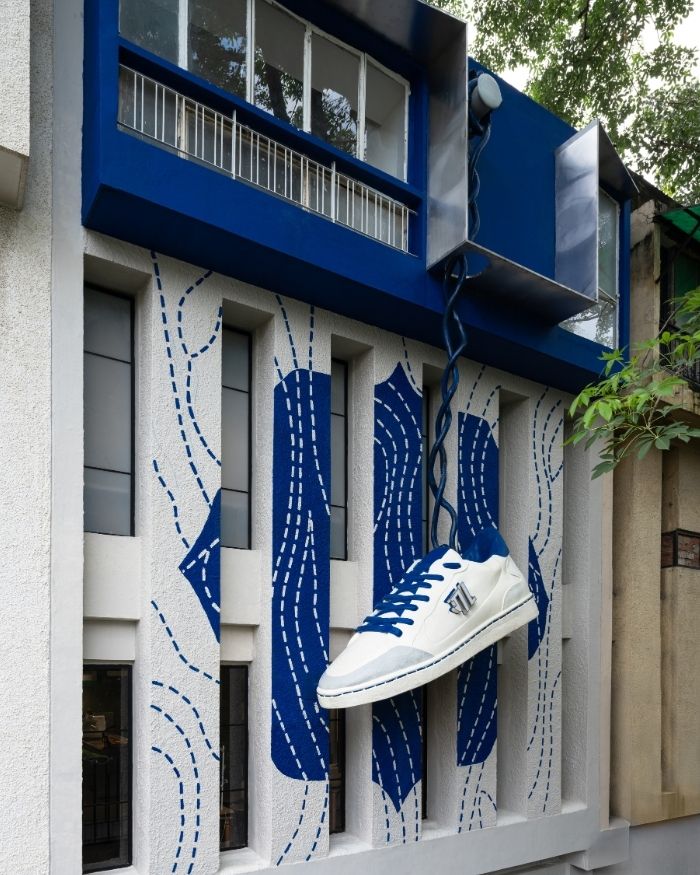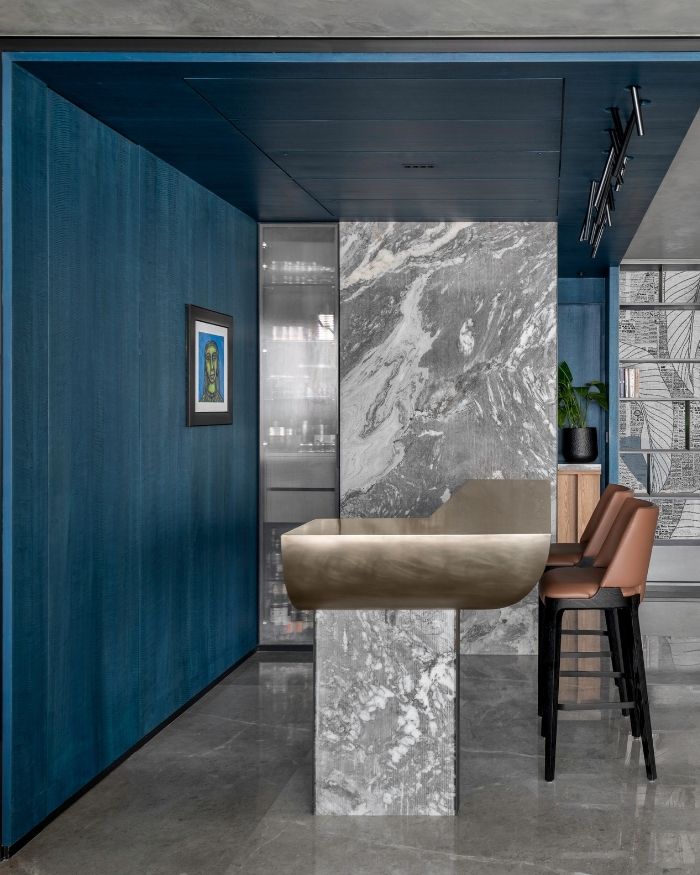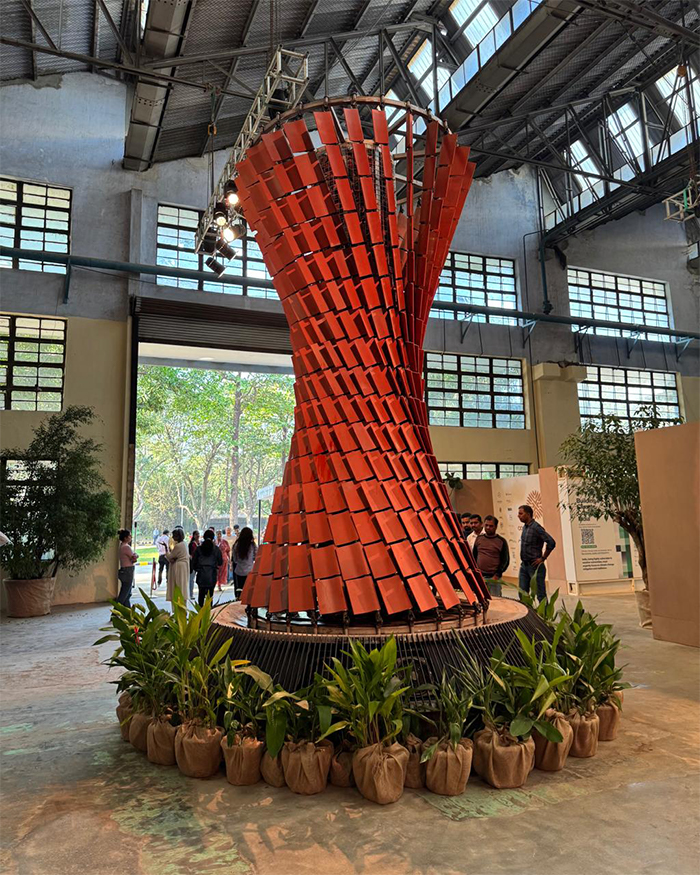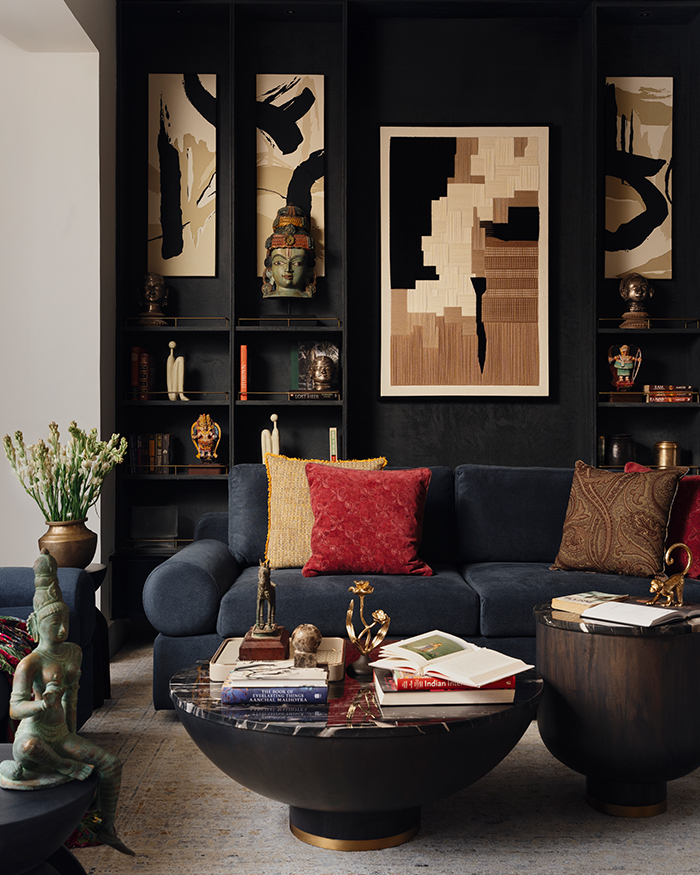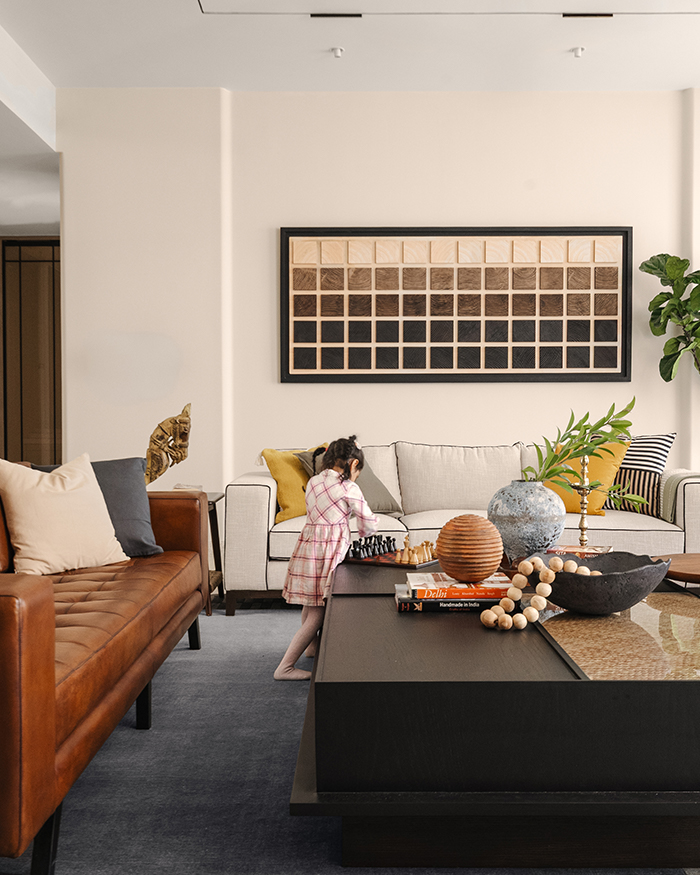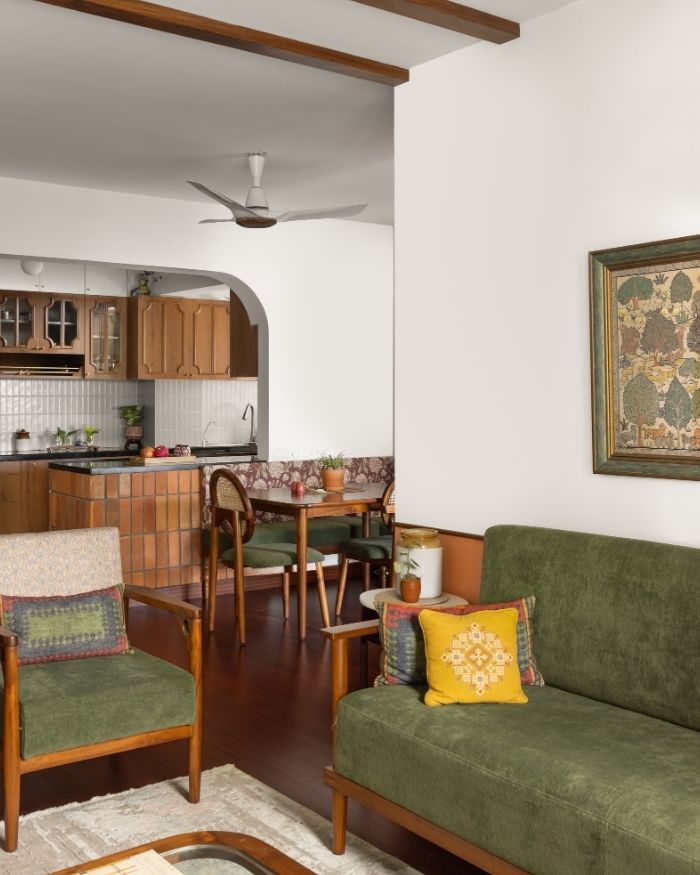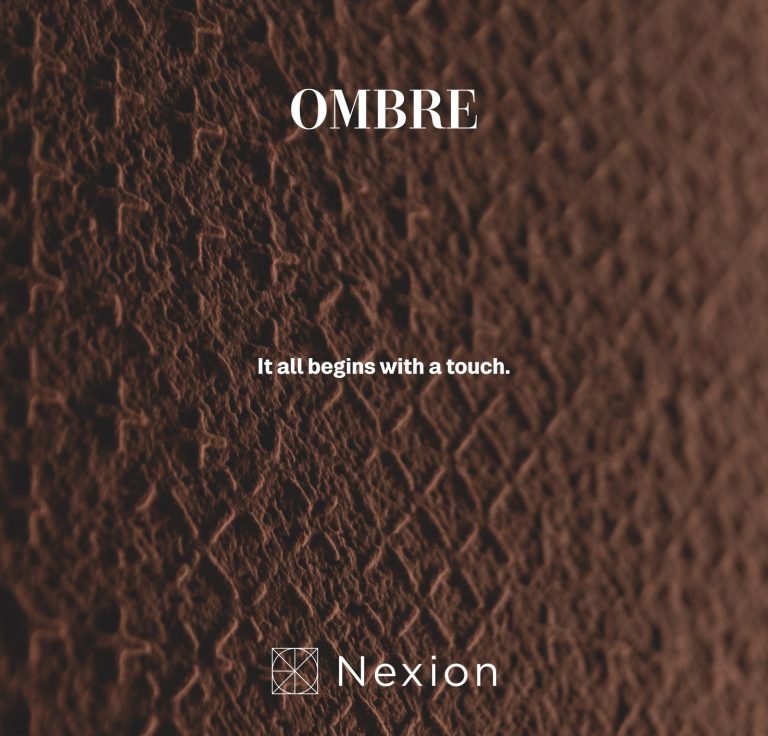Creating a home for a well-known fashion curator with their own heightened sense of style was both a challenge and learning experience for the mother-daughter team of architects, Nina Puri and Ayesha Puri Kanoria of Sanjay Puri Architects. “The client was keen to use modernised Indian art forms, whether it was introduced in the material palette, treated surfaces or furniture and decor. She respected natural materials like cane, brass in their untreated and raw state,” says Ayesha.
This 1,350 sq ft home evolved into a canvas not only for art and colour, but also experimentation in terms of finishes and new materials. Notwithstanding the fact that the site came with a lot of structural and civil issues that needed addressing as it was housed in an old building. Creating an open plan and capitalising on natural light, they eliminated the corridor spaces and allowed for each area to organically open up into one another.


The unique aspect of this home is it’s romance with art and the symbiotic relationship it has with the interiors. “The design process and art curation happened simultaneously, with one feeding off the other. Almost all the art used had a story to it—we got concrete pieces to spell the word ‘zameen’ representative of the husband’s real estate business. A commissioned series of works that portray the phases of the moon, had a sentimental value for the client. Tiny embroidered houses that depict a child’s drawing were added in the boys room. Pichwai artworks at the entrance pay homage to Jainism. The pocket space leading to the powder toilet is actually flanked by cupboard shutters that have 84 species of plants hand painted onto it at site by local artisans,” Ayesha elaborates.


A neutral shell devoid of heavy panelling and marble was deliberate so as not to overpower the art. “Using the same flooring and natural wood and brass as recurring materials in different corners helped us to bind the space together. We created spaces that opened up into one another. The study can shut down completely to become a private cosy space, and otherwise can be opened up to be a part of the living room. We even separated the study and dining room using a glass picture window that can be opened to further mitigate the distinction between spaces,” says Ayesha. The interventions established a spatial relationship in the layout and tied the art pieces together.


Working brilliantly as a team they draw on each other’s strengths—Nina’s years of experience and a knowledge bank to handle complications on a project imparts security and confidence whilst Ayesha experiments with new materials and ideas. When it came to furnishing the apartment, everything was made in Ahmedabad and Mumbai. Statement pieces like the Marcel Breuer chairs are given an Indian spin with local paisley embroidered fabric. The dining console is a take on a traditional letterbox. The bench at the entry is created by sourcing antique vases and devising a glass box around it to craft a seating that resembles art.

The colour ‘gulaal’ is the unifying thread across the art and furniture —the letterbox dining console, cushions and the pipes of the chandelier. Explaining the metaphor, Ayesha says, “Gulaal, the colour of Holi is emblematic of the Hindu spirit. This home, through antiques, Pichwais, matkas, Nagaland warrior fringes and local art and craft is symbolic of the celebration of our culture in its truest form—hence its name.”
You may also like: Read rustic with a modern flair in this Mumbai home designed by Shahen Mistry

